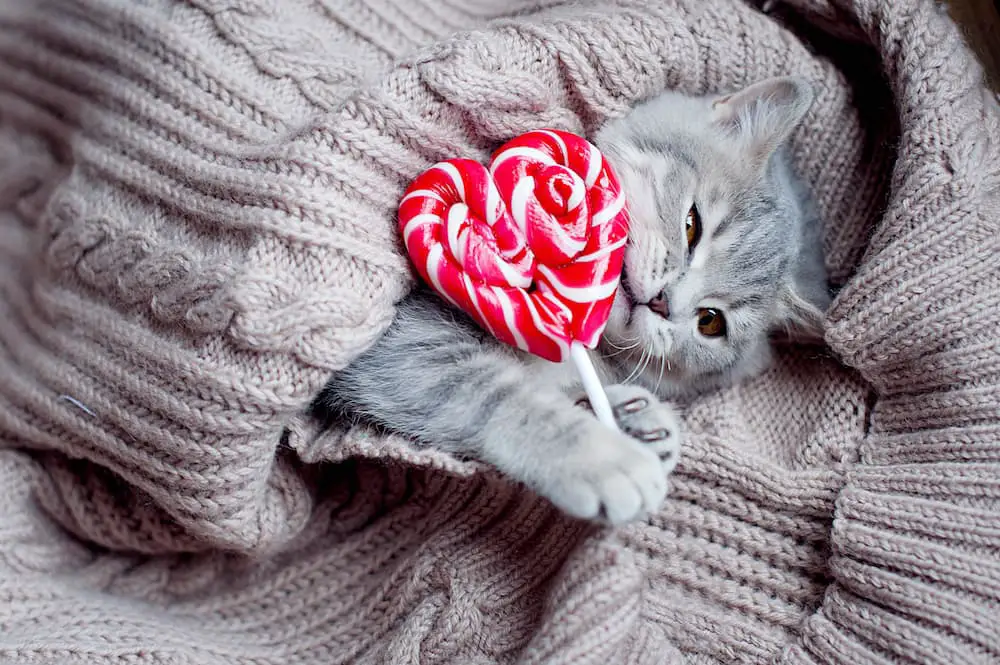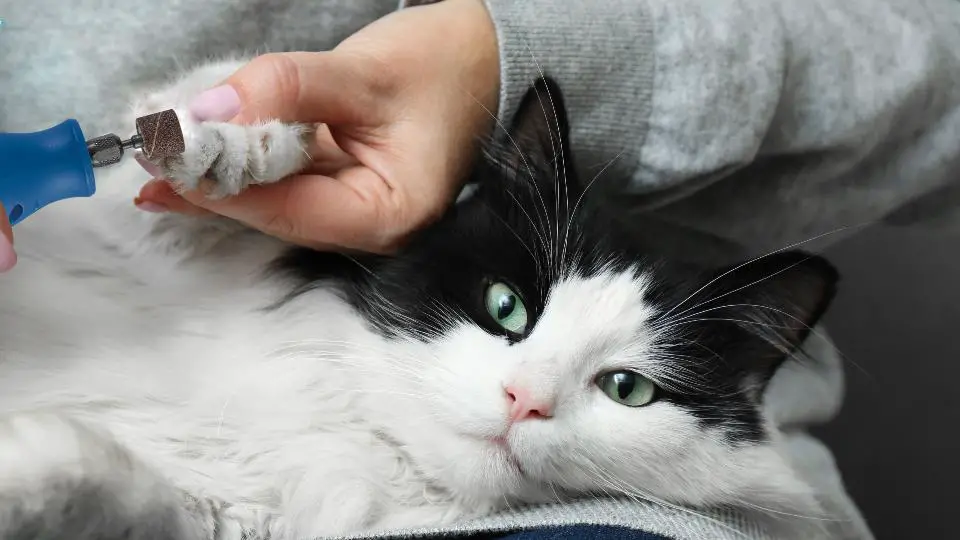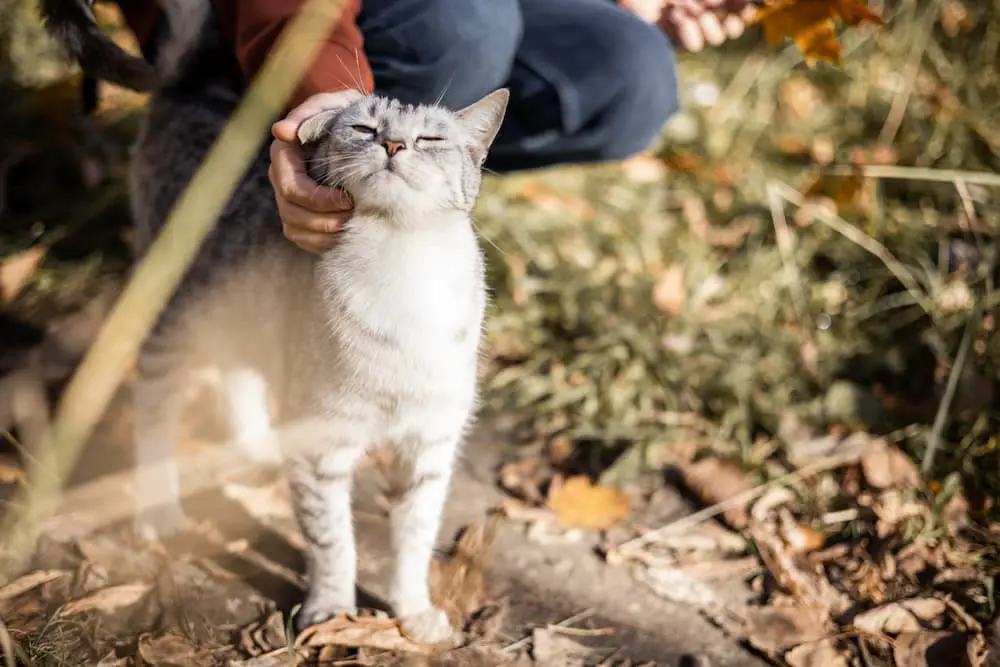
Have you ever been charmed by those viral videos of gigantic cats casually lounging across their owners’ laps? Cats, known for their dainty size and lithe demeanor, take on a whole new appeal when scale meets fluff! If a larger-than-life feline friend sounds like the purrfect addition to your household, then you’re in for a treat. We’re exploring the top five giant cat breeds that might just be your next ideal companions. From the majestic Maine Coon to the wild-at-heart Savannah, each of these breeds comes with its own set of characteristics, care requirements, and unique appeal. But before you rush to adopt one of these big bundles of fur, there are a few things you should know.
1. Maine Coon: The Gentle Giant
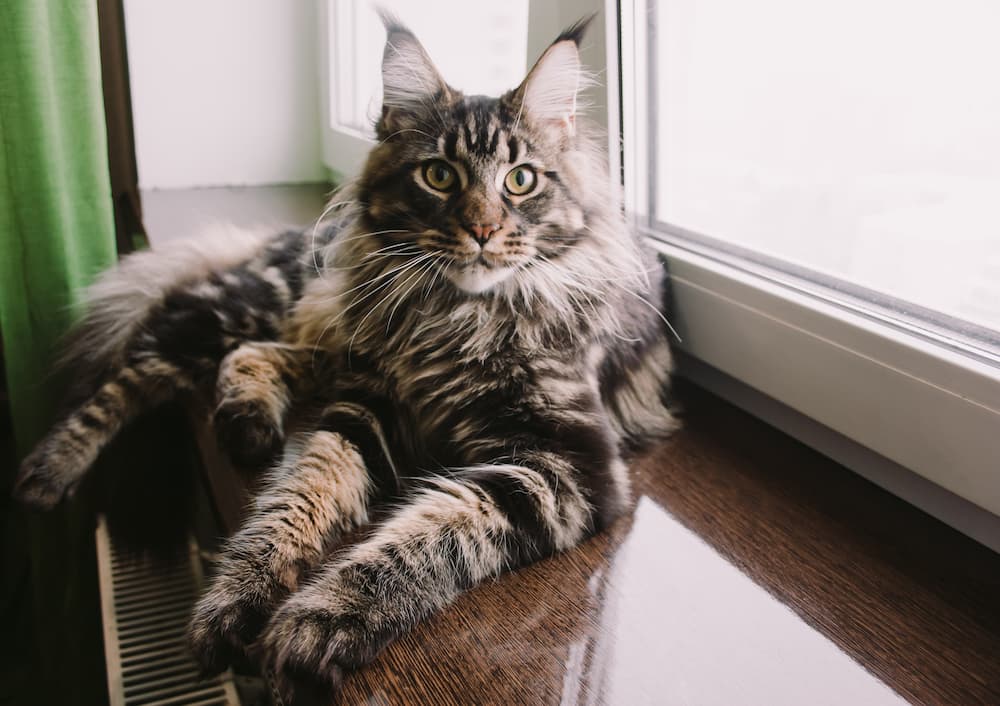
The Maine Coon is often heralded as one of the gentlest and most friendly cat breeds. Originating from the U.S. state of Maine, these cats are famous for their large size, tufted ears, and bushy tails. Males can weigh between 13 to 18 pounds, while females are slightly smaller at 8 to 12 pounds. What Maine Coons lack in heft, they make up for in personality, being friendly and playful. They are also known for their intelligence, making them easy to train.
Maine Coon Personality
Maine Coons have a dog-like devotion to their owners and will often follow them around the house. They also have a playful nature, making them great pets for families with children. However, their size means you’ll have to watch out for unintentional roughhousing.
Maine Coon Care
Their long, thick fur requires regular grooming to prevent matting. A good brushing a few times a week should suffice. Maine Coons are generally healthy but can be prone to hip dysplasia and Hypotrophic Cardiomyopathy (a genetic heart condition), so regular vet checkups are recommended.
How Much Do Maine Coons Cost?
Adoption fees and breeder prices for Maine Coons can range from $1000 to $6000. Always choose a reputable breeder to ensure good health and ethical treatment.
2. Ragdoll: The Laid-Back Cuddle Buddy
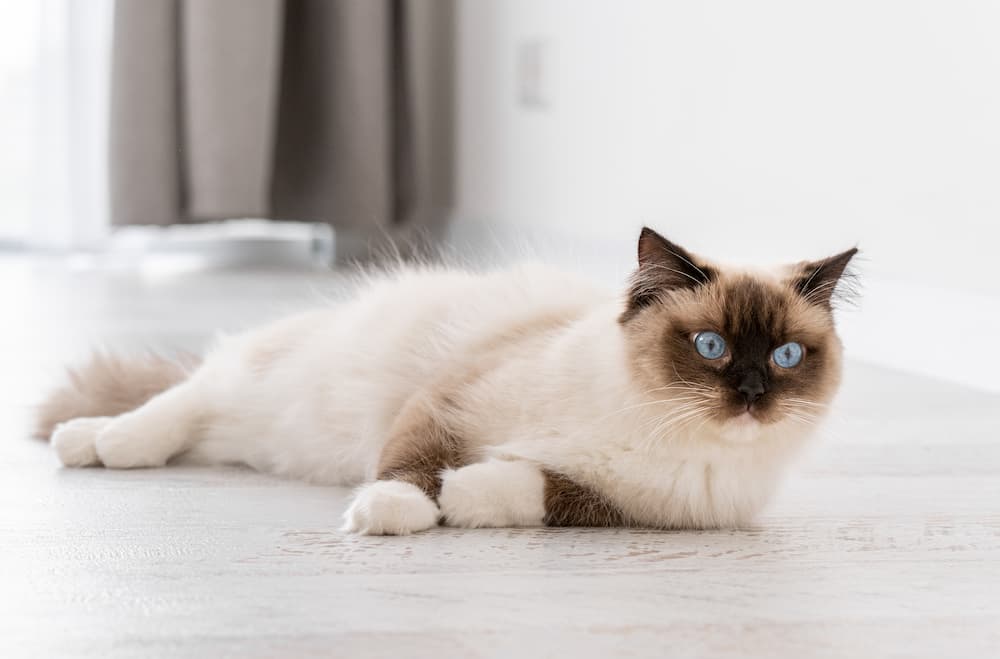
Next on our list of the biggest pet cats — Ragdolls are aptly named for their tendency to go limp when you pick them up, like a child’s toy. These large, affectionate cats are known for their striking blue eyes and semi-long coats that require regular grooming. Males typically weigh from 15 to 20 pounds, with females usually weighing 10 to 15 pounds. Ragdolls are a relatively newer breed, having been established in the 1960s.
Ragdoll Personality
Ragdolls are docile and affectionate, often following their owners from room to room without being underfoot. They are not particularly vocal and are known for their gentle nature, making them suitable for most families.
Ragdoll Care
Their fur is prone to matting, so a regular grooming routine is necessary. Due to their laid-back nature, Ragdolls might become overweight if not given enough exercise.
How Much Do Ragdoll Cats Cost?
Adoption fees and breeder prices for Ragdolls can range from $1000 to $3000.
3. Savannah Cat: Wild at Heart
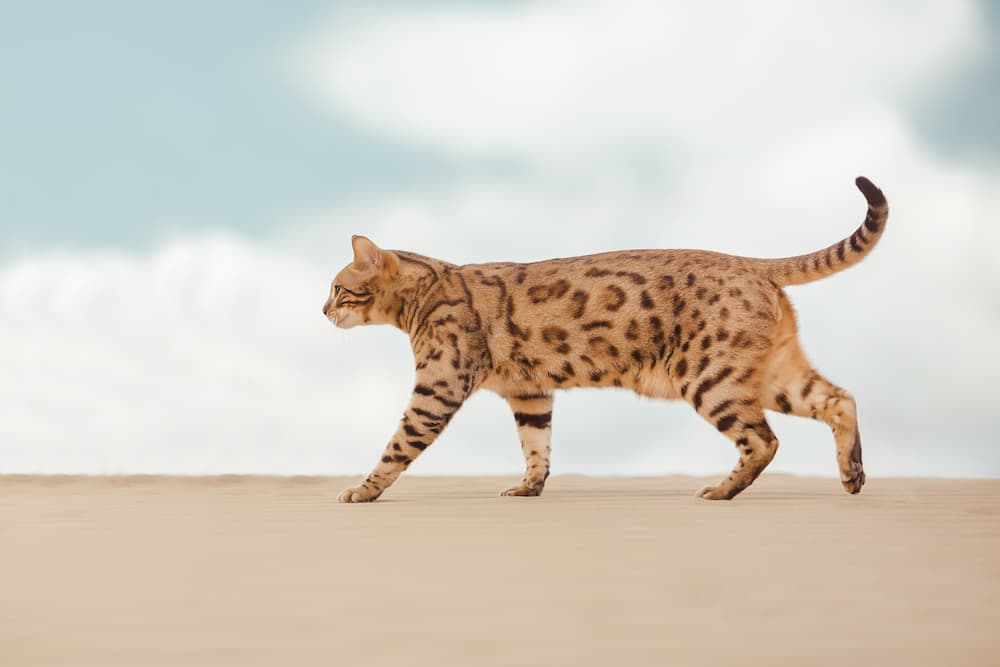
Savannah cats are a crossbreed between a domestic cat and the serval, a medium-sized, large-eared wild African cat. The International Cat Association (TICA) notes that F1 and F2 generations of Savannah cats can be rather large. They range from 12 to 25 pounds. Because of their wild heritage, they often exhibit more active and outgoing behaviors than your typical house cat.
Savannah Cat Personality
Savannahs are known for their intelligence and curiosity. They tend to be energetic, rambunctious, and require a lot of stimulation. Some can even be taught to walk on a leash! They are a good fit for families with older children and other pets, but their spirited nature might not be suitable for everyone. They require socialization and positive reinforcement combined with plenty of exercise.
Savannah Cat Care
Their short coats don’t require much grooming, just a weekly brush to eliminate loose hair. Savannah cats are generally hardy, but they should be screened for progressive retinal atrophy (PRA), a genetic condition that causes degenerative, late-onset blindness.
How Much Do Savannah Cats Cost?
Savannah cats often rank higher in price due to their rarity and are typically in the range of $1500 to $20,000 depending on whether the cat is first generation breeding between a serval and a domestic cat (F1) or a later generation with F1 and F2 cats being more expensive (and usually larger in size). The further away from the Serval, the litters get larger, the cat’s size gets smaller and the cost decreases per kitten.
Note the following states have restrictions on owning a Savannah Cat: Alaska, Delaware, Georgia, Idaho, Iowa, New York, Nebraska, New Hampshire, Massachusetts, Rhode Island, Texas, Vermont, and Hawaii.
4. Norwegian Forest Cat: The Fluffy Viking
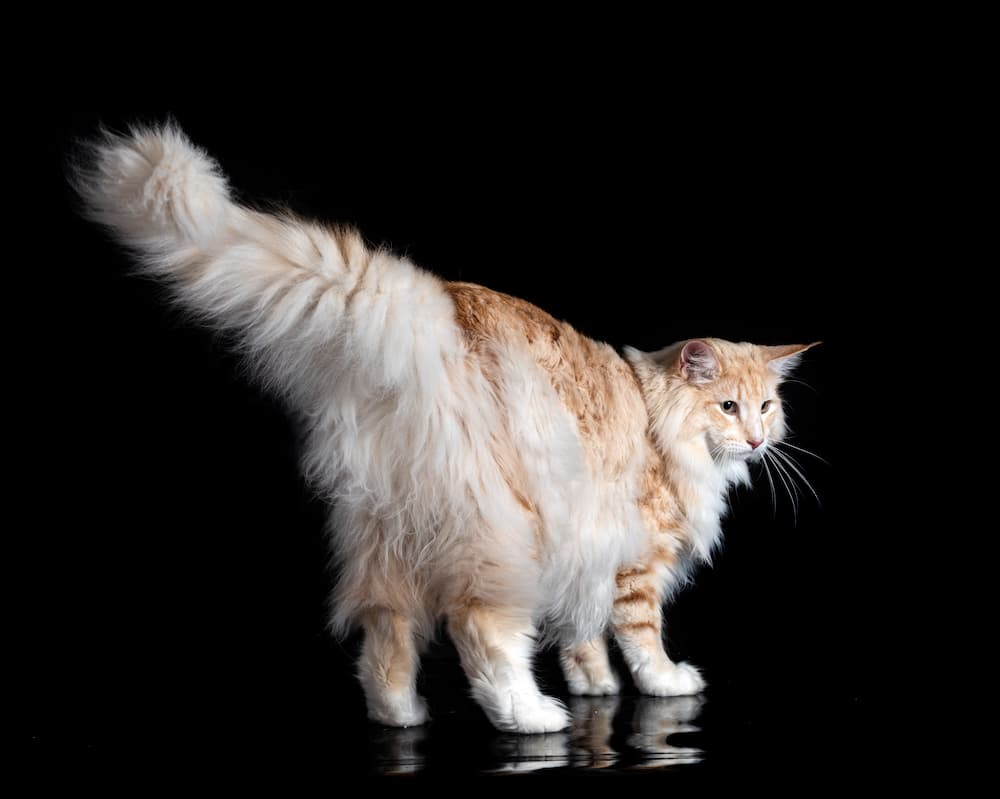
The Norwegian Forest Cat is a natural breed and is adapted to a very cold climate, with a top coat of glossy, long water-shedding hair, a woolly undercoat for insulation, and that iconic ruff around their necks. They are known for their robustness and size. Males can weigh between 12 to 16 pounds, with the females being about one-third smaller, weighing 9 to 12 pounds.
Norwegian Forest Cat Personality
Norwegian Forest Cats are generally very good with people and other animals. They are intelligent and affectionate but not clingy. They do well with other animals, especially if they’re introduced to them at a young age. They thrive in quiet, loving environments with regular grooming and play sessions to avoid obesity and keep them out of mischief.
Norwegian Forest Cat Care
Unlike other longhaired breeds, the Norwegian Forest Cat doesn’t shed much and requires minimal grooming. Though it’s not a hypoallergenic breed, its coat is low maintenance and requires minimal brushing, with extra grooming in the spring when it sheds its thick winter coat. The breed has minimal health issues, but as with any purebred cat, they may be more prone to genetically based diseases. One of these is glycogen storage disease, which causes muscle tremors and trouble walking.
How Much Do Norwegian Forest Cats Cost?
Norwegian Forest Cats are relatively less expensive in terms of adoption fees and breeder prices, typically ranging from $800 to $2500.
5. Siberian Cat: The Playful Explorer
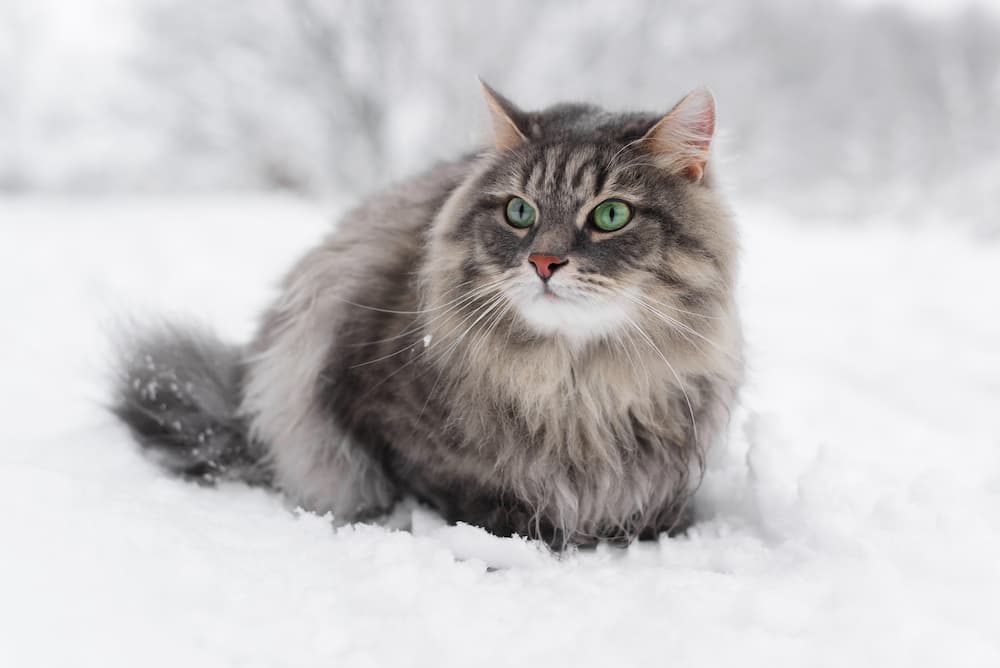
Siberian cats are native to Russia and are the national cat of that country. They are wonderful companions noted for their dog-like loyalty, adventurous nature, and playfulness. Males are generally larger, weighing between 15 to 20 pounds, while females are typically smaller, ranging from 10 to 15 pounds. Even with their thick, long coat, some consider the Siberian cat to be hypoallergenic as they naturally produce less of the protein FelD1, which most cat-allergic people are sensitive to.
Siberian Cat Personality
Siberians are loyal and affectionate, with mild-mannered personalities, making them good companions for families. They are also known to get along well with other pets and children. Their playful personality means they’ll have a friend to keep them entertained. This breed loves to climb, explore, and play with toys, so be prepared to keep a Siberian cat mentally and physically stimulated.
Siberian Cat Care
Their triple-layered coat requires more grooming during the spring shedding season. Their need for grooming decreases significantly outside of this period. But do be prepared to find a lot of hair around your house when you live with a Siberian. Hypertrophic Cardiomyopathy is more prevalent in certain breeds, including Siberians. Responsible breeders will screen their cats for this heart disease to avoid passing it along to future generations.
How Much Do Siberian Cats Cost?
The price ranges from $1000 to $2500 to adopt a Siberian cat from a breeder. Adopting from a rescue is an option, though less common for rarer breeds like these.
Special Considerations for Giant Cat Breeds
Caring for a giant cat breed comes with its own set of considerations. Due to their size, they tend to eat more than your average house cat. Quality nutrition is especially important for maintaining their health and preventing obesity, which can lead to various health complications, including joint issues. Veterinarians may recommend a specialized diet to manage your giant cat’s weight and nutritional needs.
In terms of health, because of their larger frames, giant cat breeds may be at a higher risk of certain health issues, such as hip dysplasia and joint problems. Regular exercise, grooming, balanced nutrition, and annual vet checkups are key to keeping them healthy and happy.
When it comes to cost, everything from adoption fees to food and healthcare for a giant cat can be more expensive than for a smaller breed. This is something to consider when deciding if a large cat breed is right for you.
In Conclusion
Choosing a giant cat breed as your new family member can be a rewarding experience, filled with love, companionship, and some seriously Instagram-worthy moments. However, it’s not a decision to be taken lightly. Research is key to understanding the needs and nuances of each breed. Ensure that your lifestyle can accommodate the specific care requirements and special considerations that come with owning a cat who’s larger than life. With the right preparation and consideration, a giant cat can be the king (or queen) of your heart and home.
The Catington Post is reader-supported. That means, if you make a purchase through links on our site, we may earn an affiliate commission. All images and names which are not the property of The Catington Post are the property of their respective owners.



